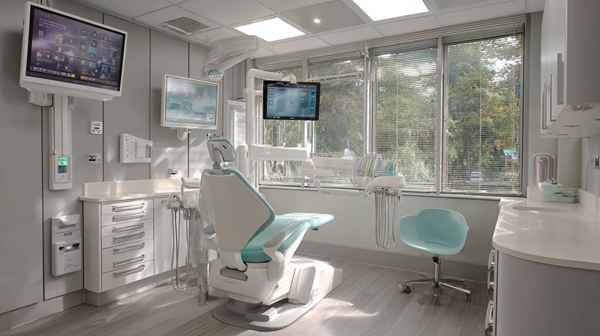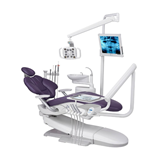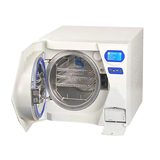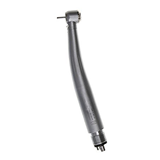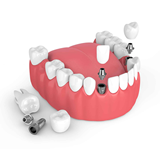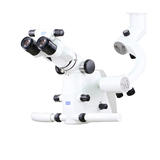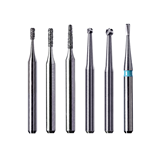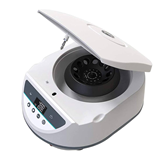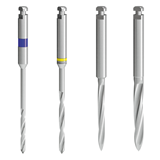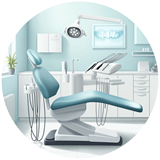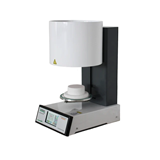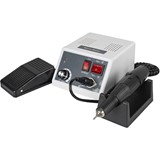Discover the latest trends in smart dental technology in Australia, from intraoral scanners to AI imaging and how to finance and implement them.
Key takeaways
- Transformation: Smart dental equipment is revolutionising diagnostics, treatment planning and clinic workflows across Australia.
- AI integration: AI-powered imaging and diagnostic tools boost accuracy and reduce chair time.
- Digital workflows: Connected systems for scheduling, records and billing enhance both patient experience and staff efficiency.
- Cost and financing: While upfront costs remain high, chattel mortgages, equipment leases, rent-to-own and low-doc loans help practices spread the investment.
- Compliance: Verifying TGA/ARTG registration and meeting Privacy Act 1988 data-security requirements are essential before purchase.
- Uptime: IoT-enabled monitoring and remote maintenance on sterilisation units and imaging devices minimise downtime and protect revenue.
- ROI and adoption: Early adopters report faster returns, increased patient throughput and greater loyalty.
- Training: Structured staff training and change-management processes are critical to unlock full utilisation and avoid under-utilisation.
Introduction: Dentistry enters the digital age
From AI-powered diagnostic tools to digitally integrated chairside systems, smart dental equipment is redefining how clinics operate in Australia. These technologies aren’t just about futuristic appeal, they’re about delivering faster, more accurate care while easing the administrative burdens that weigh down many practices.
As the Australian dental market becomes increasingly competitive, with IBISWorld reporting over 18,500 dental practices in 2024, the adoption of smart technology is fast becoming a strategic necessity, not just a nice-to-have. With more patients expecting digitally enhanced experiences and better clinical outcomes, embracing smart equipment can mean the difference between leading the market and lagging behind.
Understanding smart dental equipment
What counts as "smart"?
Smart dental equipment typically includes devices that integrate:
- Sensors for real-time data capture
- Connectivity (e.g. Wi-Fi, Bluetooth, cloud) for seamless system integration
- Automation for streamlined workflows
- AI/machine learning for enhanced diagnostics or image analysis
Smart dental equipment transforming Australian clinics
As technology advances, many types of traditional dental equipment are evolving into smarter, more connected tools. Below is a breakdown of key categories of dental equipment becoming “smart,” how they work, what to consider when buying, and what they could mean for your clinic’s bottom line.
1. Intraoral scanners
What makes them smart: Modern intraoral scanners offer real-time 3D imaging, AI-driven error detection, cloud-based storage, and integration with CAD/CAM and PMS systems.
Top use cases:
- Same-day crown and bridge work
- Digital impressions (eliminates messy trays)
- Faster orthodontic consultations
Typical cost range: $25,000–$55,000
What to check before buying:
- Is it compatible with your current PMS or lab workflows?
- Is there local support and training available?
- Are there ongoing fees for software/cloud access?
Practices switching from physical to digital impressions often reduce remakes and chair time, leading to 20–30% higher treatment capacity.
2. Digital radiography systems (with AI diagnostics)
What makes them smart: These systems automatically analyse dental X-rays using machine learning to identify decay, bone loss, and abnormalities—often with higher consistency than manual review.
Top use cases:
- Faster diagnosis
- Improved patient communication (visual treatment planning)
- Early detection of periodontal disease or caries
Typical cost range: $30,000–$90,000
What to consider:
- Does the AI have TGA approval?
- Can it integrate with your imaging and charting software?
- What level of diagnostic accuracy does it offer in peer-reviewed trials?
Use AI-enhanced X-rays in patient consultations to increase trust and case acceptance, especially for expensive restorative procedures.
3. Chairside CAD/CAM systems
What makes them smart: hese systems use integrated 3D scanners, design software, and milling machines to create dental restorations in-house—some in as little as 15 minutes.
Key features:
- AI-driven design suggestions
- Smart maintenance alerts
- Cloud sharing with labs for complex cases
Typical cost range: $80,000–$150,000
Checklist before buying:
- Can your clinic handle the volume to justify same-day dentistry?
- Are your clinicians trained in digital restoration design?
- Are consumables (milling blocks, burrs) readily available locally?
A Perth-based cosmetic dentistry clinic using CEREC cut lab fees by 30% and reported 50% more restorative appointments per week after implementation.
4. Smart sterilisation and infection control units
What makes them smart:
Modern autoclaves and washer-disinfectors track and log each cycle, notify users of required maintenance, and integrate with compliance software for auditing.
Why it matters:
- Supports compliance with ADA Infection Control Guidelines
- Automates logging for accreditation
- Prevents equipment failure due to missed servicing
Typical cost range: $10,000–$25,000
What to ask suppliers:
- Does the unit automatically log sterilisation cycles?
- Is the software compatible with Australian regulatory requirements?
- Can alerts be sent via mobile or email?
These units are especially helpful in multi-chair practices where multiple sterilisation cycles run daily—minimising downtime and human error.
5. Smart patient chairs and delivery systems
What makes them smart: These chairs integrate touchscreen controls, pre-set treatment modes, patient data access, and self-diagnostic systems.
Applications:
- Seamless transitions between treatments
- On-chair visual display for patient education
- Maintenance alerts to reduce downtime
Price range: $25,000–$50,000 per chair system
Evaluation tips:
- Can the chair link with your existing patient records?
- Is there voice or foot pedal control for infection control?
- Does it offer automated maintenance prompts?
6. Connected patient management and imaging software
What makes them smart: These platforms unify imaging, scheduling, clinical records, and billing in one digital ecosystem—often with AI-based features like appointment optimisation or digital treatment simulations.
Key features to look for:
- Secure cloud backup with multi-location access
- AI features for time-saving automation
- Integrated video or animation tools for treatment explanation
Ensure the software is hosted in Australia or meets local data sovereignty laws under the Privacy Act 1988.
Before investing in any smart dental equipment, trial the product in a demo environment or request a pilot period from the vendor. Some Australian suppliers and finance partners offer rental-to-own or leasing models, letting you test functionality before committing to full ownership.
The decision-making journey: From curiosity to commitment
1. Identifying the right technology for your clinic’s goals
Not all smart equipment is made equal, or necessary. Before investing, assess where your clinic needs the most improvement.
Ask:
- Are you losing time in manual data entry or appointment handling?
- Are diagnostics inconsistent or time-consuming?
- Are patient expectations shifting toward digital experiences?
A suburban Brisbane clinic struggling with long wait times implemented a digital X-ray system integrated with their practice software. The result? 40% faster diagnostics and a 15% drop in appointment cancellations due to better time management.
2. Evaluating return on investment (ROI)
Smart equipment can be expensive. For example:
- Intraoral scanners can cost $25,000–$55,000
- AI-enabled radiography platforms start from $15,000
- Integrated CAD/CAM systems range from $80,000–$150,000
But the returns can be tangible:
- Increased patient throughput
- Fewer repeat appointments
- Higher treatment acceptance rates
Compliance and data security
TGA regulations for medical devices
Smart dental equipment that collects or processes clinical data often falls under TGA regulation as a medical device. This includes:
- Diagnostic software
- Imaging tools with AI processing
- Remote monitoring tools
TGA approval must be verified before purchase. You can check the ARTG (Australian Register of Therapeutic Goods) for registration details.
Privacy Act and patient data
Smart devices collect sensitive data. Under the Privacy Act 1988, practices must:
- Obtain informed consent before collecting data
- Ensure secure storage and encrypted transmission
- Allow patients to access their records
Fines for non-compliance can exceed $2.5 million, especially if there’s a data breach.
Overcoming common challenges
High upfront costs
Many practices hesitate due to steep investment requirements. Options include:
- Equipment finance (loans, leases, or chattel mortgages)
- Supplier-based instalment plans
- Tax deductions under the temporary full expensing scheme
Look for lenders that specialise in dental equipment and understand its depreciation and ROI cycle.
Integration headaches
Some systems don’t play nicely with others. Integration failures cause duplicate data, billing errors, or diagnostic gaps.
Checklist for avoiding issues:
- Ask vendors for integration demos with your current PMS
- Look for open API or HL7 compatibility
- Consult IT support before purchasing to assess network capacity and security requirements
Staff training and change management
Investing in smart dental equipment is only half the challenge—ensuring your team actually uses it to its full potential is where the real ROI lies. One of the most common reasons for underutilised technology in Australian clinics is inadequate training and lack of team buy-in.
Why training is essential
Smart tools often come with steep learning curves. Without proper onboarding, you risk:
- Workflow disruptions
- Slower patient turnaround times
- Frustrated staff reverting to manual processes
How to train your team effectively
Here’s how to ensure smooth adoption from day one:
- Start early: Involve team members in supplier demos before you buy. This creates familiarity and reduces resistance.
- Choose vendors that offer on-site training: Ensure the supplier provides initial setup support, practical training, and refresher options.
- Use digital learning resources: Leverage manufacturer videos, interactive simulations, and online certifications for continuous skill development.
- Schedule training during quieter periods: Avoid rushing the learning process—block out dedicated hours for hands-on training.
- Appoint a tech champion: Assign a trusted team member to lead the rollout, troubleshoot small issues, and liaise with the vendor.
Managing change across the clinic
Introducing new tech can be disruptive, especially in busy practices. Good change management ensures your team is motivated—not overwhelmed.
Top tips:
- Communicate the ‘why’: Explain how the new technology will make their work easier, reduce manual tasks, or improve patient care.
- Set clear milestones: Break the rollout into small, manageable phases with specific goals.
- Reward early adopters: Acknowledge team members who embrace the changes—it helps build momentum.
- Create feedback loops: Encourage staff to share issues and suggestions during early rollout. This builds trust and improves implementation.
Financing options
Smart dental equipment can significantly improve efficiency and patient experience—but the upfront costs are no small matter. Fortunately, there are several financing options and government incentives available to help Australian dental clinics make the leap.
Financing pathways for Australian dental practices
You don’t have to pay everything upfront. Here are the most common finance structures used by clinics:
Chattel mortgage
- Ownership: You own the equipment from day one
- Tax benefit: You can claim interest and depreciation
- Use case: Ideal for high-value, long-term assets like CAD/CAM systems
Equipment lease
- Ownership: The lender owns the equipment; you lease it
- Tax benefit: Lease payments may be deductible as an operating expense
- Use case: Suitable for rapidly evolving tech like AI software or scanners
Rent-to-own / Operating lease
- Ownership: Optional purchase at the end of the term
- Benefit: Lower initial commitment, ideal for testing new equipment
- Use case: Ideal for newer or expanding practices trying smart tech
Low-doc loans
- Advantage: Minimal paperwork and faster approvals
- Available through: Dental-focused lenders
What to consider before buying
Key questions to ask
- Does the equipment align with your patient base?
- For example, CAD/CAM might be overkill for paediatric-only clinics.
- What are the long-term support costs?
- Software subscriptions, sensor replacements, and software updates can add up.
- How reliable is the supplier?
- Choose suppliers with local support, repair capability, and TGA-registered equipment.
- What warranty and servicing options are included?
- At minimum, insist on a 12-month full warranty with optional extended support.
Future outlook: What's next in smart dentistry?
- Remote monitoring: Teledentistry tools will expand beyond COVID-era emergency use to include post-treatment monitoring and consults.
- AI-led treatment planning: More tools will suggest optimised treatment plans based on large datasets.
- Smart toothbrush integrations: Some practices are already leveraging data from connected dental hygiene devices to track patient compliance.
- Eco-smart sterilisation: New autoclaves track water and energy use for more sustainable operation.
As these trends grow, staying ahead of the curve may give your practice a significant competitive edge.
Final thoughts
Adopting smart dental equipment in your clinic isn’t just about the latest tech, it’s about staying relevant, efficient, and competitive in an evolving Australian dental landscape.
By investing wisely, training your team, ensuring compliance, and selecting tools aligned with your clinical goals, you can set your practice up for long-term success. Whether you’re a solo practitioner or running a multi-site group, the shift toward smarter, more connected dentistry is already well underway, and those who embrace it early are likely to lead the next era of patient-centred care.

